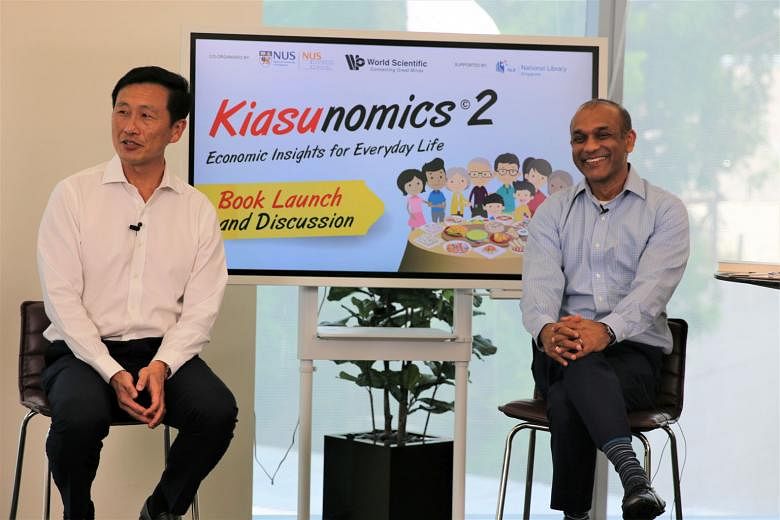Despite surge pricing, especially when it is raining or during an MRT breakdown, Singaporeans feel like they have no choice but to accept the higher costs when using ride-hailing apps, research by three National University of Singapore (NUS) professors showed.
This, and other insights, are contained in Kiasunomics 2: Economic Insights For Everday Life.
The book aims to help people understand how Singaporeans make economic decisions, and also gives tips on avoiding the pitfalls of acting based simply on gut feeling.
The sequel to Kiasunomics: Stories Of Singaporean Economic Behaviours also promises to answer questions such as "Why would you shop more under sunny weather?" and "What effects does a bankrupt neighbour have on residents living in the estate?"
It is supplemented with comics which the writers hope will help make the dense academic research accessible to, as one of the three authors, Professor Sumit Agarwal put it, even "my 10-year-old daughter".
The NUS Business School professor said: "What we want to tell the layman is that we are busy solving the problems and providing answers to their day-to-day problems.
"Obviously, the world is a complex place and we cannot solve all the issues but we try to help the policymakers and the private sector make better policies and better products," he said.
At the virtual book launch held at NUS business school on Thursday, panellists including Minister for Transport Ong Ye Kung talked about how the Housing Board (HDB) subsidies have helped maintain social mobility between the lower and middle classes.
They also discussed the profits and conveniences electronic payment has brought to banks, businesses and buyers by reducing the use of cash, as well as how retirees who are on government subsidies are spending their money.
A recurring theme was how such analyses are only possible with data supplied by ministries as well as lenders like DBS Bank, with cooperation between academics and these players reaping benefits that can be enjoyed by all.
Mr Ong said government agencies have been more willing to share data in recent years.
"We are making progress. If you ask most government agencies and ministries 'Should you share data with researchers to understand your problem better?', most of them will say yes," he said.
He added: "You all (academics) need to be thick-skinned enough to ask."
But he also said that for organisations to be willing to share data, researchers will have to cultivate good working relationships with them so that there is trust.
"Ultimately data come when you have good relations as well, and to (look at) problems in a way that all of us are interested to solve them and tackle them."
Books that are firmly situated in the local context can also help attract more young Singaporeans to become academics interested in solving local problems, he said.
The other two authors of Kiasunomics 2 are NUS professors Ang Swee Hoon and Sing Tien Foo.
The paperback version is available at $28, and the hardback at $58, at all major bookstores.


